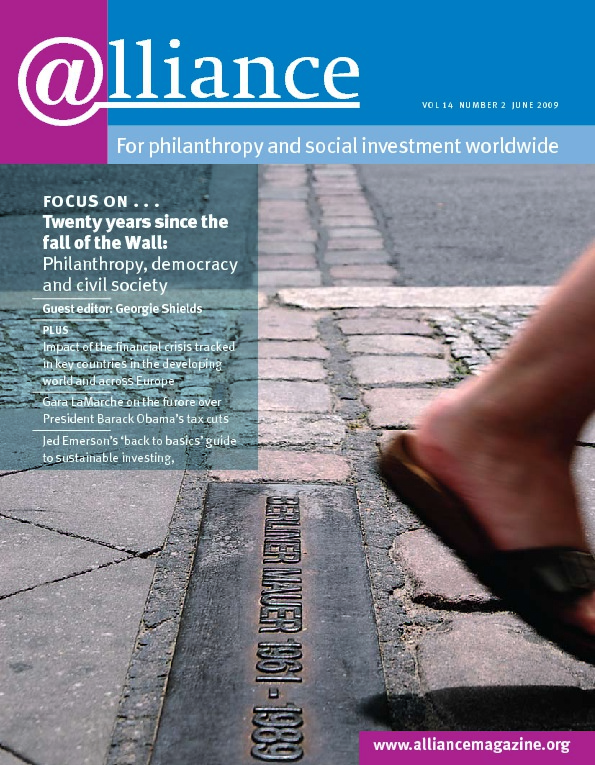My article in the last issue of Alliance was primarily targeted at making the case for perpetuity as one legitimate model for organized philanthropy. Having a robust number of models is important if you agree that philanthropy is essentially about the voluntary capture of private wealth for public benefit.
While the trend in some parts of the world is in the direction of increasing the state-mandated payout for organized philanthropy, the article argued that at about 5 per cent, a foundation wishing to exist in perpetuity can do so while taking into account the ravages of inflation and keeping its purchasing power whole.
Having said this, it might be interesting to examine some of the criticism, implicit and explicit, of the perpetuity model. The grandparent of them all has to do with donor intent. The argument goes that as one moves further and further away from the death of the original donor, the programmes of the foundation tend to move away from that donor’s intent. So much for stating the obvious. The fix here seems clear. A solid charter for the foundation will in large measure avoid the problem. The strategy you use to address a substantive problem may change, but hopefully our intent is not to exclude what we learn about what works from being applied. In those circumstances, where the original donor’s intent is no longer possible or necessary, it is a bit more complicated. We aren’t exactly inundated with such cases and the courts are appropriate arbiters of last resort.
A second criticism is that impact at times requires greater resources than can be garnered by holding payout down to an amount that allows perpetuity. One of those times is when there is an economic crisis and the call is to increase giving to make up for resource deficits. It is exactly at these moments that one committed to perpetuity must hold the line. It is always easier to manage the upside than the downside. Another time during which there is a call to increase spending is when we face a vexing widespread global problem. Such was the case when the global dimension of AIDS became known and such is the case today with the call to work on climate change. As compelling as these cases are, there is no guarantee that the issues we face today will be any more difficult than those we may face in the future.
A third viewpoint is related more to a preference for a particular operating style than an explicit criticism of the perpetuity model. The ‘give while you live’ movement is an example. This movement says that the funds were earned by one generation and should be allocated by that same generation. Others will come to the fore in future generations and expend their resources then. In part, this stems from the fact that many individuals accumulate their fortunes at an earlier point in their life and want to be more actively engaged in the allocation of those resources. There is no question that personal gratification plays an important role here, but as long as it is recognized that other models of organized philanthropy are legitimate, there is little to object to.
Finally, there is the politically and ideologically motivated criticism of perpetuity. Coming predominately from the right, the thrust here is that strategic foundations constantly invent and support demonstration projects that eventually get passed on to governments to scale up, thereby contributing to the growth of big government, a conservative ‘no no’. Although the model of demonstration projects being taken up by government had pretty well disappeared, we are hearing this language once again now that the Obama administration is in office. When conservatives felt, with some justification, that most strategic foundations were centre-left, it was easy to call for a sunset provision on the life of the foundation. Now that there are a significant number of endowed conservative foundations, the call for a sunset provision is a bit more complicated.
New models of philanthropy will continue to come to the fore and while they will broaden the menu of models, they will also challenge the existing models, perpetuity included. What is taking a more prominent place is the notion that it is not only the grants made but also how the assets are invested that will come under increasing scrutiny. At minimum, one can no longer negate on the investment side the good one does on the grantmaking side, but that is another story!
Barry D Gaberman can be contacted at bgaberman@gmail.com


Comments (0)